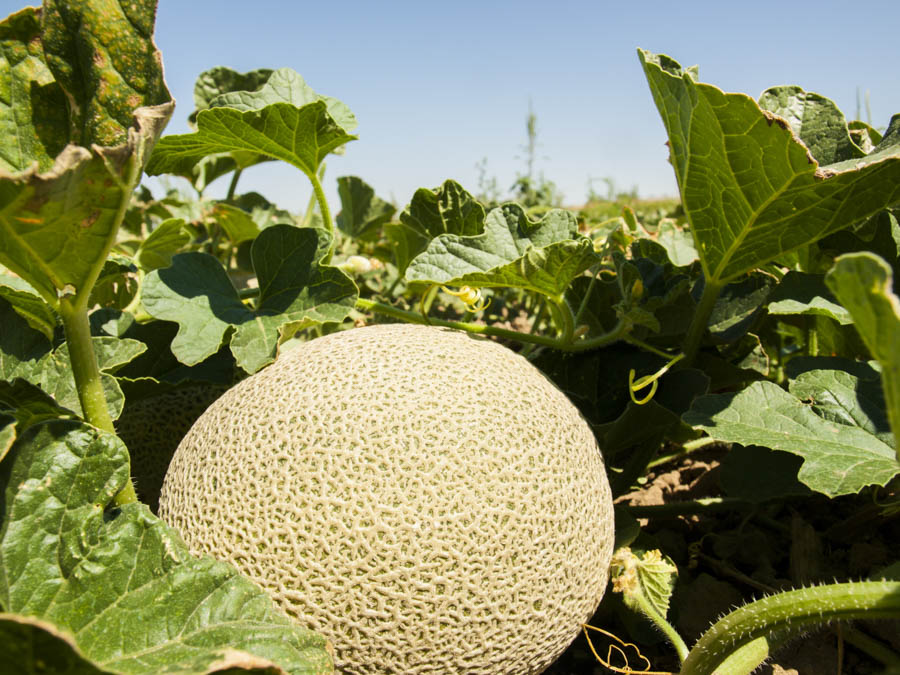Cantaloupes: An Overview of Cultural Requirements

Cantaloupes are easy to grow and make excellent additions to gardens in warm to hot summer Mediterranean areas, such as the warmer inland valleys of California. Not only is the warm to hot weather optimal, but the lack of summer rain is ideal: cantaloupe leaves stay warm, dry, and less vulnerable to disease. Gardeners who do not live in in warm to hot summer Mediterranean areas should make sure to choose a hybrid variety which has been bred for its disease resistance, such as resistance to powdery mildew.
Cantaloupe prefers fertile, well draining soils with a pH from 6.5 to 7.5. They can be grown in sandy loam, but also do well in biologically active, “living” clay soils. Avoid growing cantaloupe or other heavy feeders such as zucchini in the same place for more than one season at a time to avoid depleting soil and concentrating pest populations and diseases.
The ideal temperature for growing cantaloupe is 85-95°F. Cantaloupe plants require warm to hot temperatures for at least 3 to 4 months in full sun, with southern or southwestern exposure ideal in most areas. Unlike other garden vegetables that may suffer from blossom drop once temperatures rise, cantaloupe thrives when temperatures are well into the nineties. Cantaloupe is NOT frost tolerant. Gardeners in areas where temperatures can fall outside of the ideal growing range for cantaloupes should consider placing cantaloupes near light colored walls or use other reflective surfaces to warm plants in the summer.
Plant cantaloupe seeds directly into garden soil. Do not use transplants.
Cantaloupe plants produce long vines and take up a large amount of space to produce a small amount of food; as such, they are not ideal plants for gardens with limited space, Creative gardeners with limited space should consider growing cantaloupe on trellises and supporting the growing fruit with stockings: stockings provide strong support, expand as the fruit grows, and allow sunlight and air to reach the fruit.
Cantaloupes have both male and female flowers. Female flowers must receive adequate pollination from male flowers in order to produce fruit. Pollination is generally better in warmer temperatures.
As plants grow and establish, water regularly, slowly and deeply, to the full estimated depth of roots. Sufficient soil moisture is most crucial during the period of fruiting and flowering. For a complete guide to watering melons see The GardenZeus Guide to Watering Cucumbers, Melons and Squash (Cucurbits)
Keeping your plants clean and dry will help to prevent the spread of foliage disease.
GardenZeus has customized growing information by plant and zip code. To get started, enter your zip code here.
Other articles of interest:
See GardenZeus Alert: Beware of Heavy Feeders! for precautions about successive planting of vegetables that may deplete your soil.

